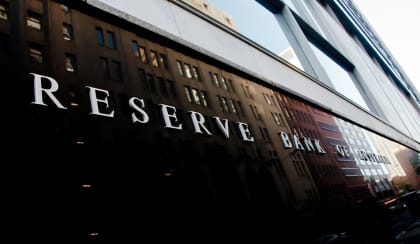RBA pauses, investors brace for August shift
Although the Reserve Bank of Australia’s July rate hold disappoints mortgage holders, industry experts remain hopeful for a potential rate cut in August.

A number of property industry experts have weighed in on the Reserve Bank of Australia’s (RBA) July cash rate decision after it was left on hold, defying widespread expectations.
The RBA’s decision to hold the cash rate at 3.85 per cent came despite the four major banks forecasting relief for millions of Australians.
Recent consumer price index (CPI) data was slightly stronger than expected at 2.4 per cent, with underlying inflation sitting at 2.9 per cent.
The RBA said it opted to wait for underlying inflation to be stable over an extended period to confirm that rates were tracking towards the 2.5 per cent target.
“While recent monthly CPI indicator data suggest that June quarter inflation is likely to be broadly in line with the forecast, they were, at the margin, slightly stronger than expected,” they said.
“With the cash rate 50 basis points lower than five months ago and wider economic conditions evolving broadly as expected, the board judged that it could wait for a little more information to confirm that inflation remains on track to reach 2.5 per cent on a sustainable basis.”
PRD chief economist, Dr Diaswati Mardiasmo, said the RBA’s decision wasn’t entirely unexpected, given that February and May’s rate cuts came after quarterly CPI readings, as opposed to monthly readings.
“The quarterly CPI reading is not available until 30th July, and there is another RBA meeting in August,” she said.
She added the rate pause would provide an extended opportunity for buyers, as a rate cut can spark more competition, which has historically increased prices.
Cotality’s head of research, Eliza Owen, said that while the July rate cut did not happen, an August rate cut now seems almost certain.
“With falling inflation, weak retail sales data and continued sluggish performance in GDP per capita, data flows strongly support a rate cut in August,” she said.
Similarly, REA Group senior economist, Anne Flaherty, said further cuts are still on the table amid data showing inflation is easing and economic growth is weaker than anticipated.
“Today’s decision to hold may slow the pace of price growth seen in the months following the February and May cuts,” Flaherty said.
“Nationally, prices are up 3.2 per cent since the start of the year, adding around $26,000 to the median price of a home.”
The Real Estate Institute of Queensland CEO, Antonia Mercorella, said the decision to hold the rate has been surprising and has introduced a “hot and cold pattern of rate cuts in 2025”.
“Today’s pause will come as an unexpected and somewhat disappointing move for borrowers and businesses alike – but the RBA is best placed to make the judgement,” Mercorella said.
Despite the pause, Mercorella said the two earlier rate cuts in February and May have already eased borrowers’ financial pressure and encouraged activity in the property market.
“The RBA appears to be tapping the brakes, potentially to allow earlier cuts to flow through the economy before acting again,” she said.
LJ Hooker’s head of research, Mathew Tiller, said the decision to leave the cash rate on hold is unlikely to impact the property market.
“Australia’s economic growth has slowed, with consumer spending, business investment and building approvals all weakening, so there is an expectation that a rate cut is around the corner,” Tiller said.
“Until that happens, we will likely see the market continue as it has been for the past few weeks.
“Listing volumes have remained tight, as many sellers continue to hold back, creating a supply and demand imbalance that is putting upward pressure on prices.”
Housing Industry Association senior economist, Tom Devitt, said the RBA’s decision was disappointing.
“This decision will leave new home building activity more constrained than necessary, for longer, but the previous two cuts to the cash rate have seen an improvement in market confidence that is likely to continue.”
“The RBA’s decision to keep interest rates in restrictive territory today will not stop the improvement in leading indicators of future home building,” Devitt concluded.
